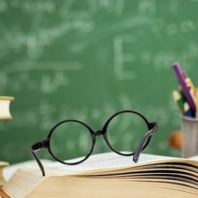Digital Literacy in Education What are the Challenges?
crisslyn December 17, 2020Over the years, technology takes an increasingly important place in the school world and soon all children will learn on digital media with many learning applications. Technology is rapidly changing teaching methods, and for children their learning styles, and this applies to all levels of the world of education. But to make the most of the powerful tools that are available today, such as school tablets, we must learn to harness the potential of technology and we must define the best uses.
The teacher remains essential and has a decisive action
Whatever technological advance is available, in education, there is no revolution and the role of the teacher remains decisive and preponderant. Technology does not supplant the role of the teacher. On the contrary, educational technology gives it even more initiatives and creative possibilities to develop new methods and even better support children in their learning even in arts. The teacher’s role is therefore to make the best of the available tools and it is he who is essential to make the most of the potential of the technology.
The NovaPad tablet, for example, leaves all its room for the teacher, by giving him many possibilities of choice of content, learning methods and also integrated tools to facilitate his monitoring and management of the class. It also allows him to make personalization choices according to the levels and gives him complete freedom to conduct his class in the way he deems most appropriate.
Distinguish active use from passive use
School tablets have a major interest because they arouse the engagement of the child. That is to say that they question him, push him to act and get involved in his learning: we then speak of active use.
Conversely, the passive use of technology describes situations where children consume content, for example by watching a program on television, on a computer or on a portable device without thinking, imagination or participation.
Active use is, among other things, the fruit of the intervention of technologies such as computers, devices and applications to participate in enriching learning or storytelling experiences.
There can be many examples of this type of use like sharing children’s experiences by documenting them with photos and stories, recording their own music, using video chat software to communicate with their children. loved ones or using an app to guide playing a physical game. These types of uses are able to deeply engage the child, especially when an adult is supporting them. And engagement is a source of reflection, facilitates learning and helps to better assimilate the concepts presented.
The teacher must therefore favor this method of using technology to facilitate the child’s interest and make it easier to acquire a knowledge or a method. Additionally, adults need to recognize if the child’s mind is active and deeply involved in the content. One of the ways in which it is possible to determine whether a child is actively participating in the content is by watching it with them (co-viewing) and guiding them into deeper engagement.
Have appropriate use of technology in early learning environments
Early childhood educators should keep children’s levels of development in mind when using technology for early learning. They actually need to figure out what is best for healthy child development first, and then how technology can help young learners achieve results. Technology should be used only as a tool to achieve specific development goals.
It should also be used alternately with other more traditional learning tools such as art materials, writing assignments, games, books, and should be able to give young learners an opportunity to express themselves.
At a young age, educational technology is not an end in itself and it must appear relatively neutral and transparent to the child. It is only a vector of knowledge and it is on this condition that it can then be easily understood and used without fear.
Using technology to increase access to learning opportunities for all children
When used appropriately by beginning learners, guided and modeled by adults, technology can complement and expand learning more effectively than any other method. For example, technology can more easily introduce children to cultures and things outside their community. Although children can access print library resources, technology can drastically increase the amount of readily available reference information on a given topic and give them the ability to easily access others outside of their classroom.
The school tablets far exceed the possible resources of the library or the library of a school. They thus offer almost infinite access to a variety of educational resources: books, videos, computer graphics, museum resources, etc. This proliferation also encourages children to do research and the role of the teacher is then to guide them to give them a methodology to carry out this research, prioritize the information found and assimilate it effectively.
Conclusion
The arrival of technology in education is a tremendous opportunity. It allows children to learn in a more fun and personalized way, but it is also a chance for teachers to have powerful tools with infinite potential. To get the best out of it, the teacher must obviously remain the one who supports and transmits knowledge. Technology does not replace it but, on the contrary, provides it with a wider range of tools to design its teaching. Finally, to make the best use of technology in the world of education, we must ensure that it is supported by the youngest, always favor active use that promotes interaction and make the best use of the immense resources offered by online access.



